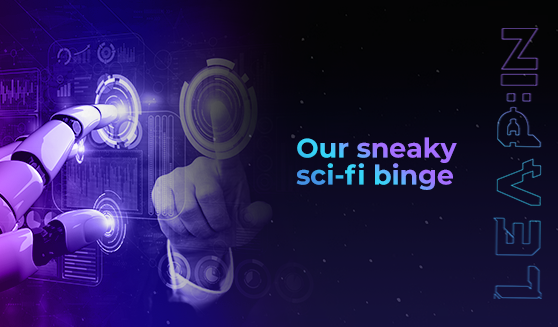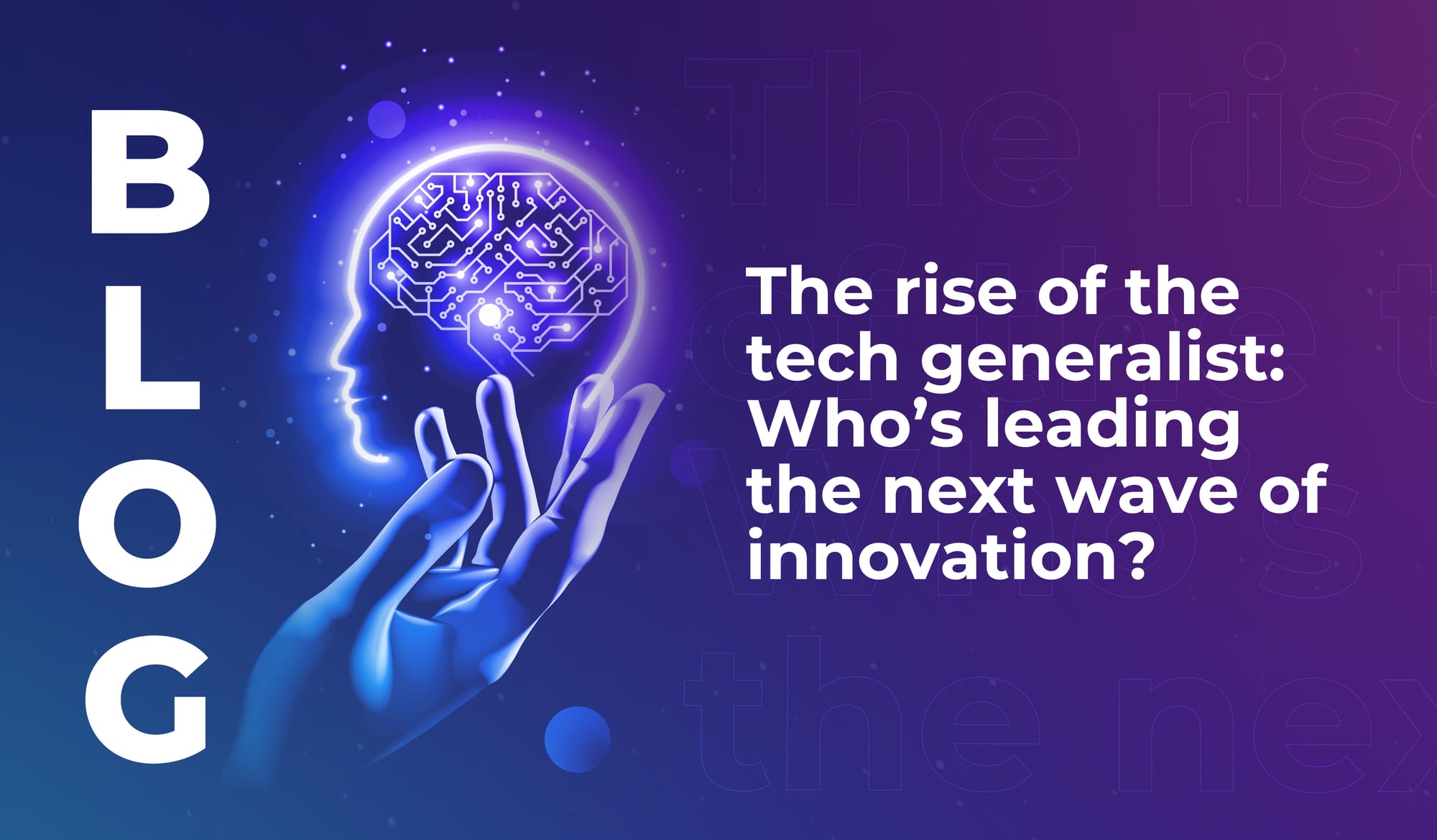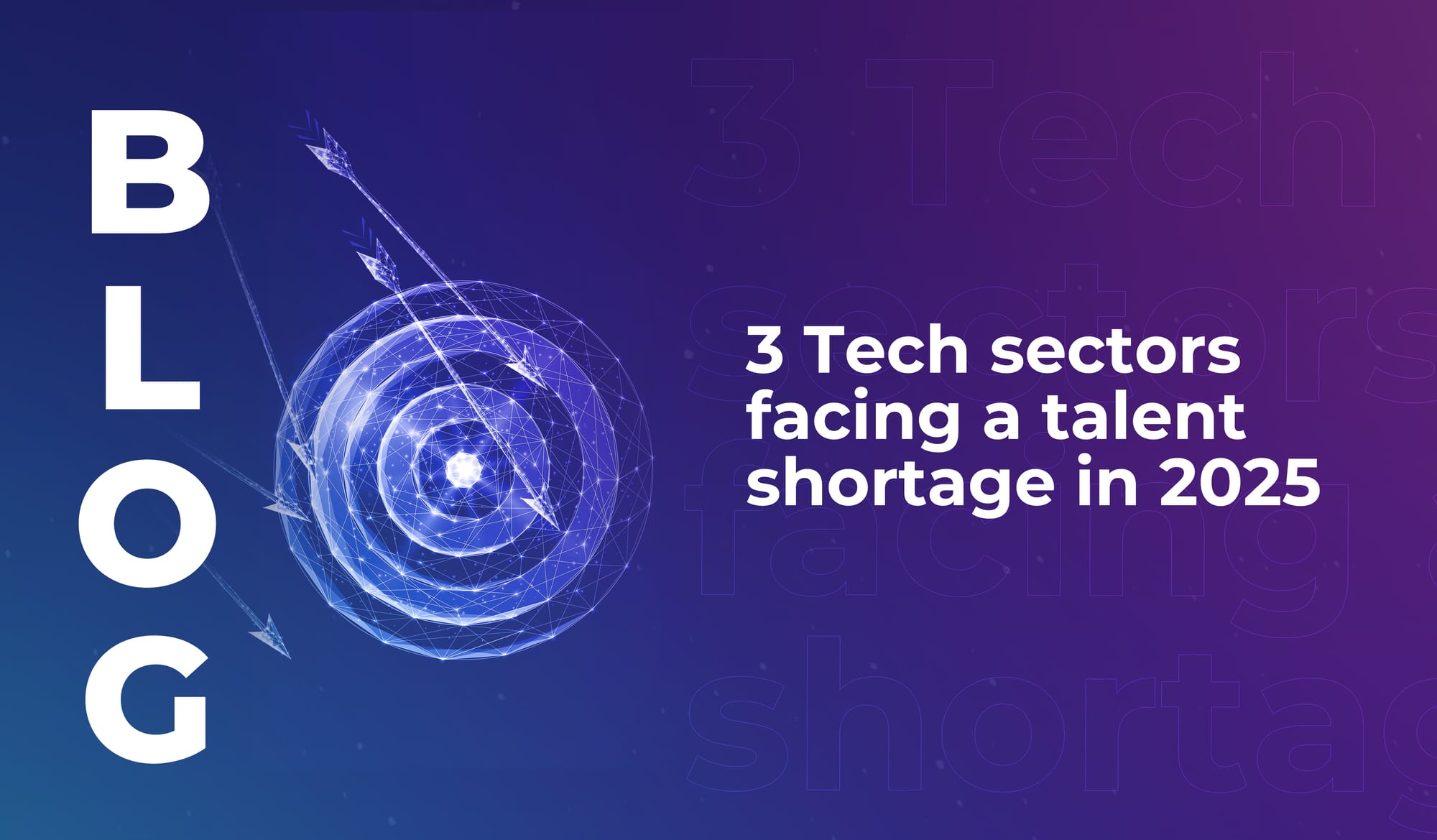
Welcome to this week’s LEAP:IN newsletter. Each week, we unpack leader’s powerful quotes and decipher the tech landscape. With exclusive content from some of the world’s leading experts in AI, robotics, space, edutech, climate tech and more, read on to discover this week’s insights and subscribe to receive weekly updates direct to your inbox.
subscribe
This week we’re quoting…
Fahri Diner (CEO and Founder at Plume)
What Diner said:
“In the space between, things happen for you. In some cases they happen simply because you desire and you ask. In other cases your needs are anticipated because the universe understands the context and intent. It understands you. Predicts what you want, and makes it happen – on your terms, with minimal effort, because you own the space in between.”
So we’re digging into the sci-fi archives this week
Because Diner’s notion of intuitive, predictive, user-serving digital tech must have been illustrated in sci-fi. At least once or twice. Right?
Right.
Like the breakfast machine from Wallace and Gromit (if you know, you know). Or when Bill and Ted were in jail, and they had the thought that when they got out of jail they should go back in time and get the key to the jail cell and keep it in their pocket for future use, and by the time they’d had that thought – they put a hand into a pocket and there was the key.
But 80s/90s nostalgia aside, we are thinking a little more high-tech. And a little more feasible. What Diner’s keynote brought to mind for us was the idea that data could enable a brain-machine interface that allows us to exercise advanced control over technology, using our thoughts.
And brain-machine interfaces have featured in a lot of science fiction.
This one stands out…
William Gibson’s novel Neuromancer came out in 1984. In a nutshell, it’s about brain hacking. But it introduced a range of concepts that are no longer entirely fictional. There were implants that could project a person’s thoughts out of their brain, as visuals. There was a virtual reality world accessed via an implant. And there were various implants to enhance human ability – you could make your memory better, or your vision, or your reflexes.
Could Diner’s in-between space be accessed through implants? It’s not so far-fetched (but we think it’s unlikely to happen on a large scale).
What about a hat?
In the 1983 sci-fi classic Brainstorm, scientists (played by Christopher Walken and Natalie Wood) invented ‘The Hat’. It was a hat that, when worn, could record thoughts and then project them into other people’s minds.
In modern terms, The Hat could be explained by EEG tech that records brain activity via electrodes attached either to the skull, or to a cap that sits on your head.
And indeed, EEG devices may well be a part of our future metaverse experience – NexStem (a medical tech and robotics startup) recently announced the general availability of a headset that uses medical-grade EEG signals to enable users to control the device through their thoughts alone.
Hello, Matrix
Right now, the question doesn’t seem to be whether or not our future devices will be intimately, inextricably linked with our physical bodies and thoughts. It’s how that will happen.
Implants, hats, pills – or something else entirely? Maybe we’ll find out at LEAP23.
Watch the video: Fahri Diner on the human experience of the next century
And…
Ricky Sandhu (CEO and Founder at Urban Airports)
What Sandhu said:
“Imagine a world where there’s an entirely new layer of mobility. Where you can fly to work. You can fly home, without the need for more expensive carbon-hungry roads, tunnels, bridges. A new era of mobility is possible.”
We couldn’t resist this opportunity to stick with the sci-fi
Because sci-fi writers love flying machines too.
Did you know that Avatar 2 comes out this year, after well over a decade in the making? We’re excited. And we love the aircraft in Avatar.
It’s the Aerospatiale SA-2 Samson, a human rotorwing general utility aircraft designed to carry out non-combat missions (although defensively armed with machine guns and detachable rocket pods, just in case).
This fictional aircraft is propelled by a pair of ducted fan tiltrotor nacelles (apparently), and it’s capable of left and right movement as well as up-down. Highly manoeuvrable and perfectly designed for its challenging environment.
Avatar aside…
Other stand-out sci-fi flying machines include:
- The Ornithopter, in Dune. A bird-like aircraft, conceptualised by author Frank Herbert to navigate the shifting sands of the planet Arrakis.
- The T-47 Snowspeeder, in Star Wars (it first appeared in The Empire Strikes Back). A ground-attack aircraft, adapted to the cold on the planet Hoth.
- The Kirov Airship, in the Red Alert games. The shape of an airship has become ubiquitous in sci-fi, featuring in everything from the Blade Runner novels to Watchmen. The Kirov is heavily armed – capable of flattening your base in the blink of an eye.
- The Thunderbird 2. Yep, we’re doing it – we’re mentioning Thunderbirds. This aircraft, used by International Rescue to transport heavy equipment, is flown by Virgil Tracy. And it’s iconic.
Will going to work in an eVTOL feel like flying an Ornithopter?
No. Or at least, we very much hope not.
subscribe








